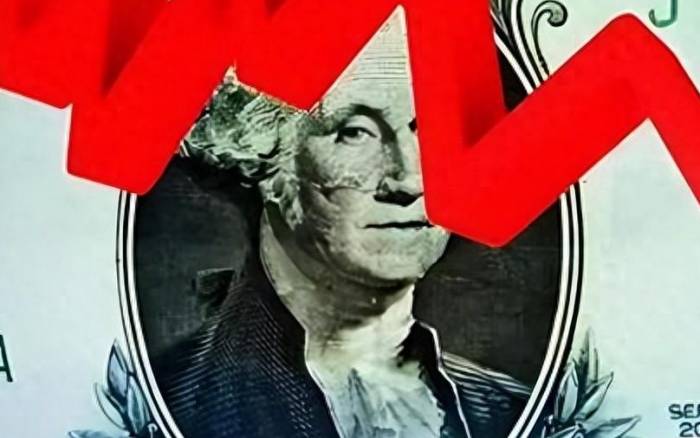China's Dollar Challenge Amid $35T U.S. Debt
Introduction
The recent decision regarding the U.S. Federal Reserve has sparked intense speculation among economists and market analysts. Following the anticipated announcement of the next president, many have predicted a significant interest rate cut by the Fed. Just this morning, the Fed officially reduced its benchmark interest rate by 25 basis points. Simultaneously, news emerged that China's government had issued dollar-denominated sovereign bonds in Saudi Arabia. This leads to a pressing question: Will the dollar lose its luster in the near future, and what ramifications could this have on the global financial landscape?
Examining the Fed’s Rate Cut
It’s worth noting that the Fed was supposed to announce its interest rate decision earlier this month, but the announcement was postponed by one day to avoid conflicting with the U.S. presidential election's final voting day. Financial analysts were divided on the expected outcome; while some anticipated a 25 basis point cut, others raised concerns about potential inconsistencies with current U.S. monetary policy.
When the decision was finally revealed this morning, the Fed confirmed the rate cut. This marks the second time this year that the Fed has lowered rates, a notable shift from its approach of aggressive interest rate hikes over the past years. The first cut, which occurred in September, came as a shock to many and was the first reduction in four years.
Advertisement
The history of the Federal Reserve's actions shows a clear pattern: whenever the Fed announces a rate cut, it often signals an impending economic downturn. Situations such as the 2008 financial crisis and the onset of the COVID-19 pandemic in 2019 exemplify this trend.
Interestingly, despite the Fed's announcement, U.S. stock markets experienced a rise, with all major indices displaying positive gains. However, some financial experts caution not to become overly optimistic due to the historical context of such rate cuts.
Market Reactions and Concerns
The focus among many market participants is currently on the gold market, with a general air of pessimism persisting regarding its future trends post-Fed announcement. Analyzing the Fed's communications reveals an anxiety about fluctuating inflation and employment figures within the economy. Fed Chairman Jerome Powell noted that the decisions made by Congress and the government could significantly impact economic conditions moving forward; thus, much depends on how the next administration navigates these challenges.
According to U.S. media reports, there is speculation that the Fed may choose to halt interest rate cuts as soon as December, potentially reverting back to a cycle of interest hikes next year. Experts in China suggest that this could lead to a robust return of the dollar in the near term, further influencing global currency liquidity.
Unpredictable Future of Fed Rate Cuts
The implications of these financial strategies are manifold. For instance, the Biden administration has recently provided data indicating a sharp decline in non-farm employment, significantly below the administrations’ projections. Only 12,000 new jobs were added last month, a clear reflection of the economic turbulence influenced by factors like severe weather and labor strikes.
Yet, despite stagnant job growth, consumer spending remains surprisingly strong, highlighted by a GDP growth rate of 2.8% in the third quarter. This sharp contrast between falling job numbers and continued consumer spending makes it difficult for the Fed to navigate its monetary policy. Inflation is another pressing concern, one which the Fed must keep in check while assessing the economy's overall health.
Meanwhile, China's strategic financial moves have captured attention globally, particularly its aim to issue up to $2 billion in U.S. Treasury bonds in Saudi Arabia. Given Saudi Arabia's expansive oil wealth, this arrangement allows China to extend credit its way, which the Saudis can repay through oil or by purchasing the bonds themselves.

This financial maneuver not only enriches China but also enhances its economic influence in the region. With Saudi Arabia ramping up oil exports to China, this could lead to a dependency shift—allowing the dollar to maintain its grip on international markets while simultaneously facilitating more robust economic ties between China and Saudi Arabia.
Moreover, such actions signal a rising prominence of the Chinese yuan on the global stage. As other countries observe China’s impact via its sovereign bonds, the yuan's credibility and acceptance may increase, further shifting financial dynamics away from traditional dollar hegemony.
China's Long-Term Vision
Reflecting on the long-term implications, the issuance of bonds in Saudi Arabia and the subsequent economic engagement aligns with China’s broader strategy to reduce reliance on the dollar, while also nurturing its own currency's status. The establishment of a China-Saudi economic zone exemplifies how both nations might mutually benefit through enhanced trade relations.
Furthermore, the ties between energy-rich countries like Saudi Arabia and China provide a unique opportunity: as these nations utilize their natural resources, they can not only service their debts but also bolster industrial growth. This, in turn, would assist in achieving diversification strategies to reduce their own economies' long-term reliance on commodities.
In a striking development, China has also engaged in a partnership with fifty-two countries across Africa, culminating in a "Belt and Road" initiative. This venture aims to bolster infrastructure while paving the way for energy exchanges and accessing the continent's vast natural resources.
Conclusion
While the Federal Reserve's latest decisions regarding interest rates will undoubtedly have significant impacts, it’s essential to recognize that China’s sustained efforts to reposition itself on the global financial stage signal a determined strategy to increase its economic independence. The intricate interplay between the Fed’s policies and China's calculated moves sets the stage for a rapidly evolving international economic landscape, where shifts in currency value and trade relationships will continue to unfold in surprising ways.
Comment